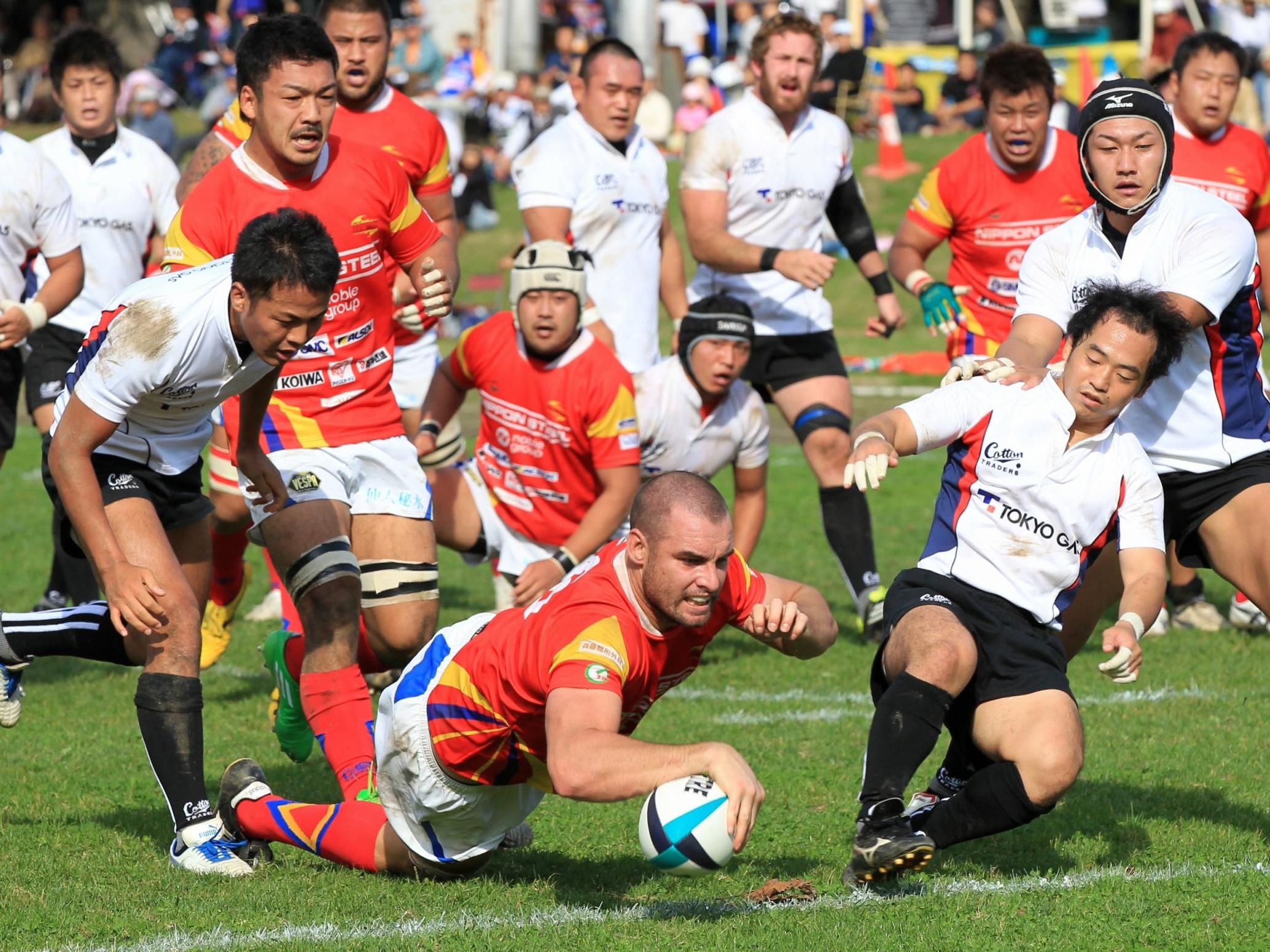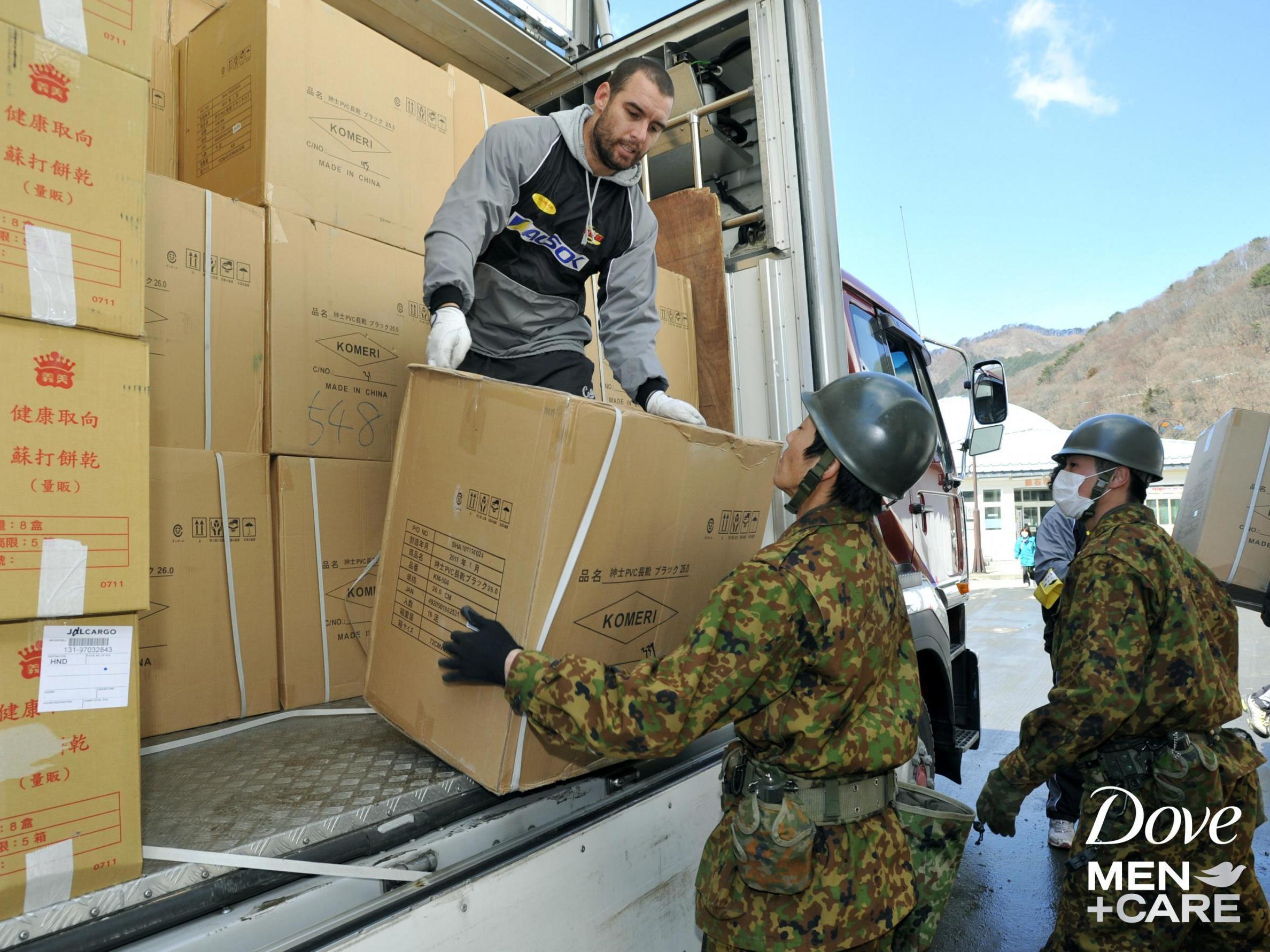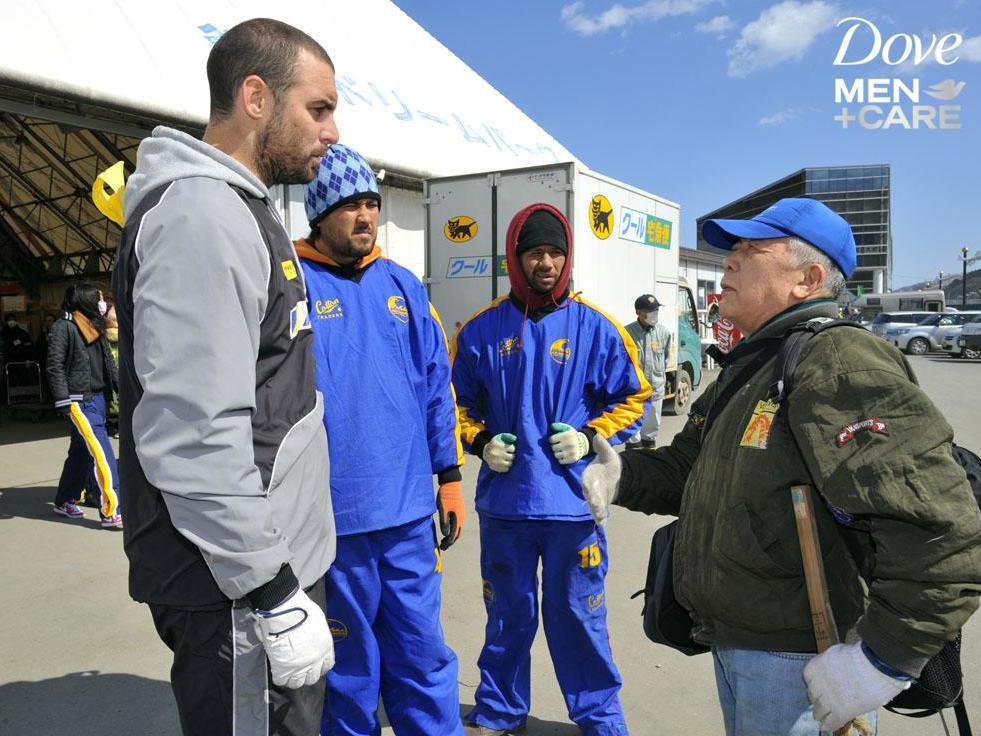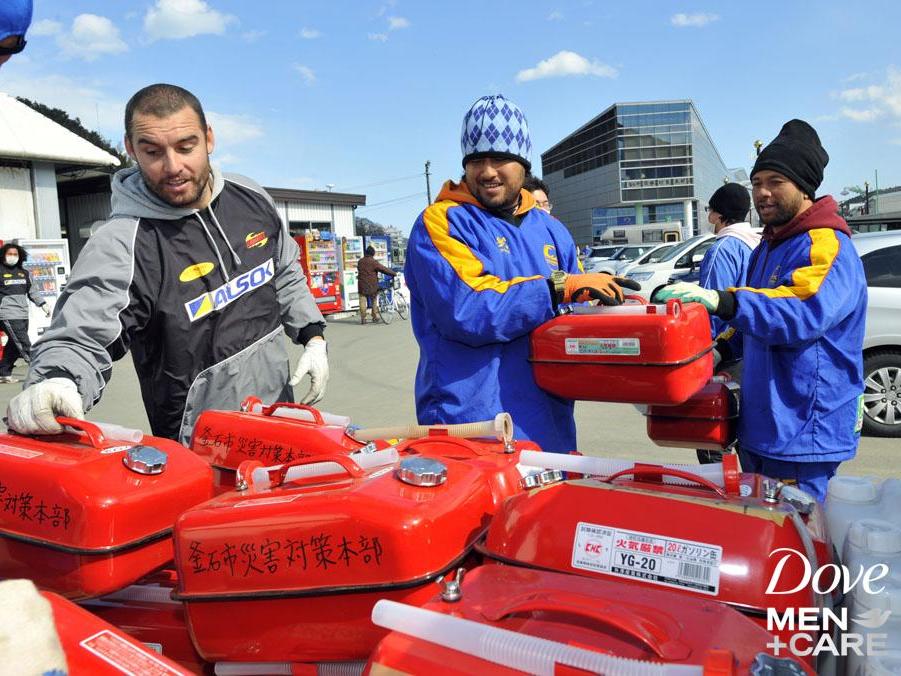Reliving the 2011 Tohoku earthquake: Scott Fardy recalls how life changed in Kamaishi the moment the tsunami hit
With the Rugby World Cup one year away, Australia flanker Scott Fardy remembers living through the 2011 natural disaster and how the rugby community rallied around the local community

Your support helps us to tell the story
From reproductive rights to climate change to Big Tech, The Independent is on the ground when the story is developing. Whether it's investigating the financials of Elon Musk's pro-Trump PAC or producing our latest documentary, 'The A Word', which shines a light on the American women fighting for reproductive rights, we know how important it is to parse out the facts from the messaging.
At such a critical moment in US history, we need reporters on the ground. Your donation allows us to keep sending journalists to speak to both sides of the story.
The Independent is trusted by Americans across the entire political spectrum. And unlike many other quality news outlets, we choose not to lock Americans out of our reporting and analysis with paywalls. We believe quality journalism should be available to everyone, paid for by those who can afford it.
Your support makes all the difference.Fiji taking on Uruguay may not be the biggest match at next year’s Rugby World Cup, but it is perhaps the most meaningful.
When the referee blows his whistle to kick-off the Pool D encounter, yet another chapter will be written in Kamaishi’s illustrious rugby history. Now home of the Kamaishi Seawaves, the city once boasted one of the most successful clubs in Japanese rugby history, with Nippon Steel Kamaishi winning eight All-Japan titles in nine years between 1976 and 1985.
But where the history was once about winning championships, now it will be one of regrowth and recovery following one of the biggest natural disasters the world has ever seen.
The 2011 Tohoku earthquake shook Kamaishi for nearly five minutes, causing widespread damage, panic and fear among its near 40,000 population. But that was only the start of the devastation, as a tsunami that measured as high as 14 feet in places destroyed the northern town and killed around 1,250 residents. Nearly 16,000 died in total across the country. Thirty per cent of homes in Kamaishi were damaged or destroyed, 60 per cent of businesses were inundated by the tsunami, and 98 per cent of the local fishing fleet was wiped out.
Millions around the world watched on in horror as the drawn-out suffering was broadcast across the globe, but for Scott Fardy, the experience was first-hand. The 34-year-old flanker was on the books with Kamaishi when the 9.1 earthquake struck 45km off the coast of Japan, although he had experienced plenty of tremors during his time in Japan, given the country sits atop a joining of four of the 12 tectonic plates that make up the Earth’s surface.
Yet immediately he knew this earthquake was like no other.

“The shock and the disbelief is the first thing,” Fardy tells The Independent. “The size of the actual quake and how powerful it was, you don’t expect to be part of such a huge earthquake in your life. I think it was just complete shock at that point.
“I’ve experienced quite a number as anyone who lives in Japan does, it shakes quite a bit but never of that magnitude or of that length of time. Normally it’s a short time but this went for a long time and it was scary, it was a very scary time.
“It shows you the value of life. Everything was gone in one moment, you think you’re worried about things and have your concerns and then they’re taken away pretty quickly. It probably changed my perspective on quite a few things.”

Lucky for Fardy, at the time of the disaster he resided away from the coast line and, despite the experience being a traumatic one, he was relatively safe compared to what unfolded in the city centre. The Australian embassy promptly offered to fly him back home to safety, but after saying a temporary goodbye to his family, he remained in Kamaishi with the rest of the overseas players to help with the relief effort.
“By the time we’d got to the town it had settled down, power had come back on the night before so there was some kind of normality returning,” he adds as part of Dove Men+Care's 'Spirit of Rugby' series. “For us we weren’t in any danger ourselves, we were pretty safe and not suffering at all compared to others.
“It was a good month or so that we were helping. We just focussed on that for about a month, and then everyone went home for a few weeks to see their families and stuff like that. Then about two weeks later it was time to go back for pre-season.”
Seven years down the line, the rebuilding effort continues. Just last month, the Kamaishi Recovery Memorial Stadium opened its doors for the first time. Locals encouraged the city’s rugby players to return to their training in the wake of the 2011 disaster in order to prepare for the new season and give the Iwate region something positive to focus on.

The 16,187-capacity stadium staged its opening game last month as the Seawaves took on Top League side Yamaha Jubilo, and in little over a year’s time, the stadium will open its doors for Fiji and Uruguay to play out one of two World Cup matches that will take place on the same site where schools were destroyed by the tsunami, against a backdrop of the Pacific Ocean and layers of rainforest. When it does, Kamaishi will be ready to tell its story.
“It’s going to be massive,” says Fardy, who himself is yet to decide whether he will remain with Leinster, after being nominated last season for European Player of the Year as part of their Champions Cup and Pro14 double, or head home to make a late bid to feature in his second successive World Cup.
“It’s given them drive and a focus for the town. It’s a proud area and before the tsunami hit, it had a great history of rugby in the area. Nippon Steel were one of the most successful Japanese clubs of all time, people from Kamaishi and Iwate, across the whole prefecture, they love rugby and love being a part of it. To have a nice stadium within the town with a great story behind it is going to be special and I look forward to being there when they host a game at the World Cup.

“There’s not many stadiums that have that story behind it. They’re normally just built up, pack fans in and hold games, but this has a story before a game is played. Regardless of what happens, there’s a life or death story. You can see from sitting in the stadium the school on the hill where kids ran, from where the stadium is now and where the school used to be. It’s pretty special to be part of a story and the recovery of the stadium.
“It was special, seeing a packed out stadium as well, we didn’t have that experience normally when I played there. It was maybe 3,000 people at games so I think it’s amazing to see especially if you’re one of the Aussie guys playing there now that I’m friends with. It’s great to see them having a good time in Kamaishi where I was really enjoying the fantastic town that it is.”

The dangers of course still loom. Just last week an earthquake struck the northern region of Hokkaido that left around 40 either dead or missing, while the US Geological Survey recorded more than more than 10 different tremors in the last week.
But Kamaishi’s motto since being awarded two pool games has been “rebuilding through rugby”, and for the people that were so deeply affected by events seven years ago, it will be a moment to cherish that puts the city in the headlines for the right reasons.
Dove Men+Care are a proud partner of the World Rugby Awards 2018. Follow the ‘The Spirit of Rugby’ video series at youtube.com/dovemencareuk
Join our commenting forum
Join thought-provoking conversations, follow other Independent readers and see their replies
Comments